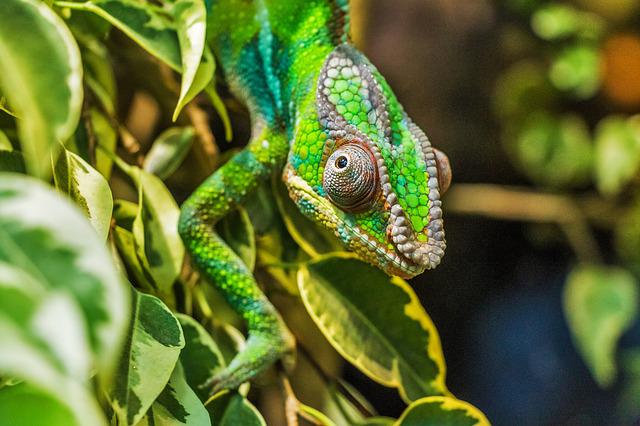A chameleon is a fascinating creature with many predators. In this blog post, we will discuss the natural predators of a chameleon and what you need to know about them. Chameleons have evolved to be very good at avoiding danger, but there are some creatures that can prey on them. We’ll cover the different types of predators and how they hunt chameleons. If you’re thinking about owning a chameleon, it’s important to be aware of these dangers.
Introduction
Chameleons are experts at camouflage and blending in with their surroundings. Unfortunately, this does not always protect them from predators.
A variety of animals including birds, snakes, lizards, and mammals will prey on chameleons.
In fact, chameleons are one of the favorite foods of the mongoose. These predators typically hunt by sight, so the chameleon‘s ability to blend in does offer some protection.
However, once they are spotted, they are at a disadvantage because of their slow movement. Chameleons typically rely on their color changeability to avoid predators, but this is not always effective. In some cases, the color change may even make them more visible to predators.
Chameleons have a number of other adaptive features that help them to avoid becoming prey. They have excellent vision and can see in almost 360 degrees. This allows them to spot predators approaching from any direction.
They also have a prehensile tail that they can use to grasp branches and leaves for added stability. Despite these adaptations, chameleons remain a favorite food for many predators.
The main predators of chameleons are snakes
The main predators of chameleons are snakes, which can easily overpower these small reptiles. Other common predators include lizards, birds, and mammals such as cats and dogs. In order to avoid becoming a meal, chameleons rely on their cryptic coloration and camouflage to blend in with their surroundings. They also have the ability to drop their tails if they are grabbed by a predator, which allows them to escape and grow a new tail over time. By understanding the main predators of chameleons, we can better appreciate the strategies that these fascinating animals use to stay alive in the wild.
Other predators include birds, lizards, and other small mammals
In the wild, chameleons have quite a few predators. Among the most common are different types of birds, such as owls, hawks, and eagles.
These predators typically attack using their talons to grip the chameleon, which can cause serious injuries. Other lizards are also known to prey on chameleons, particularly if they are smaller in size. In addition, small mammals such as rodents and bats may also hunt chameleons.
These predators typically go after juvenile chameleons, which are easier to catch and kill. Fortunately, chameleons have a few defenses against their predators. Their camouflage allows them to blend in with their surroundings, making it more difficult for predators to spot them.
In addition, their long tongues can be used to strike at predators, delivering a painful bite. However, these defenses are not always enough to protect them from becoming prey.
Chameleon populations have declined in recent years due to predator loss
Chameleon populations have been in decline in recent years. One of the main reasons for this is the loss of predators. In many areas, chameleons are being harvested for the pet trade, and their natural predators are being killed off by humans.
This has resulted in an imbalance in the ecosystem, and chameleons are struggling to survive. In order to protect these reptiles, it is important to raise awareness about the issue and work to preserve their natural habitat.
Habitat destruction has also contributed to the decline of chameleon populations
One of the biggest threats to chameleons is habitat destruction. These animals are found in tropical rainforests, and as these habitats are cleared for logging, mining, and agricultural development, chameleons are losing the places they need to live.
In addition, habitat destruction can also lead to a loss of food and water sources, as well as increased exposure to predators. As a result, chameleons are declining in many areas of the world. While habitat destruction is a major threat to these animals, it is not the only one.
Chameleons are also hunted for their skin, which is used to make leather goods, and for their meat, which is considered a delicacy in some cultures. In addition, chameleons are sometimes caught and sold as pets. As a result of all these threats, chameleon populations are in decline in many parts of the world.
Conservationists are working to protect chameleon populations from further decline
Chameleons are an endangered species. According to the World Wildlife Federation, their populations have declined by 50% over the last 20 years. Conservationists are working to protect these amazing creatures from further decline.
One of the biggest threats to chameleons is habitat loss. As more and more land is developed for agriculture and urbanization, chameleons are losing the forests and bushland they need to survive. In addition, chameleons are often killed by humans who consider them to be pests.
They are also hunted for their meat and their skin, which is used to make wallets and other leather goods. Conservationists are working to raise awareness about the importance of chameleons and their habitats. They are also working with governments to create protected areas for chameleons and other wildlife. By working together, we can help protect these amazing creatures from extinction.




